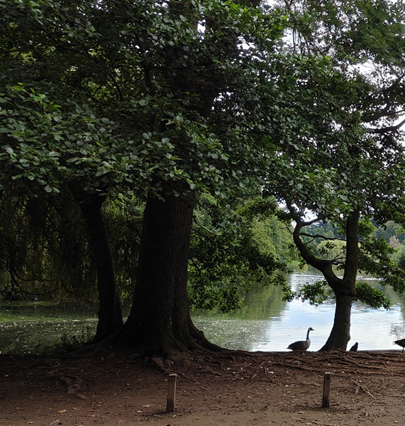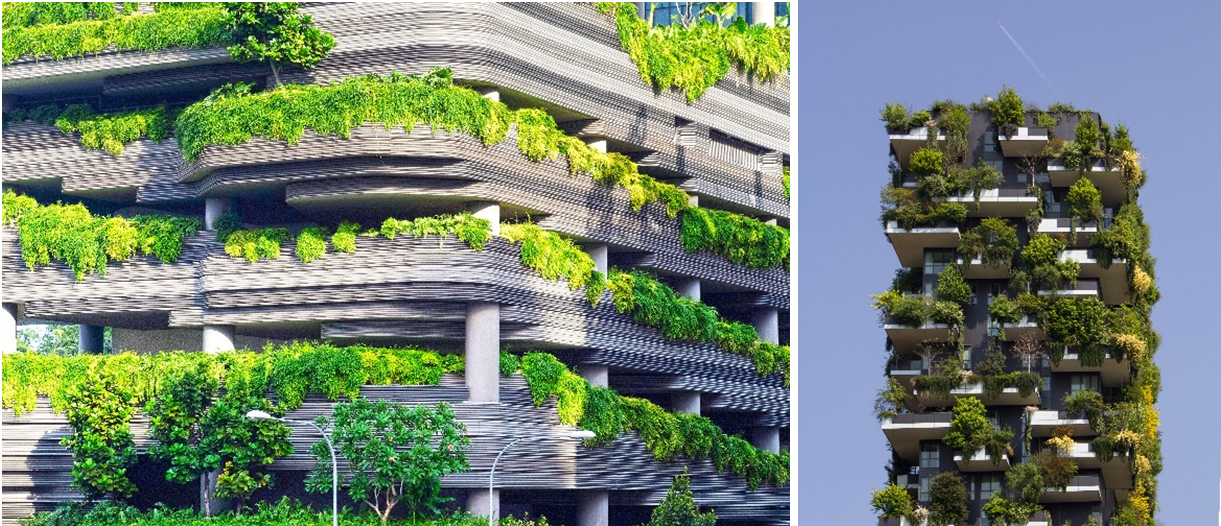

Man and Nature have always been passionately and intensely involved with each other. His love for being in unison with the forests, skies, mountains, seas – has been gloriously captured in words by poets/writers and of course by the lens. The strong urge to relate with nature amidst the architects could not have been expressed better when the great American architect Frank Lloyd Wright said, “Nature is my manifestation of God. I go to nature every day for inspiration for the day’s work.” The messages from all master architects revolve around one thought that good architecture has always attempted to align with nature rather than confront it.
Pritzker awardee B V Doshi puts it very aptly when he says that “Design is nothing but a humble understanding of materials, a natural instinct for solutions and respect for nature.”
Every country has had a time-frame when urban design evolvements go against all norms concerning the environment. In the Indian context, it was the late twentieth century which witnessed planning criteria/bye-laws/city master plans and their implementation going astray.
Natural green belts were slowly and steadily squeezed by vested interests under the garb of urbanisation and industrialisation. Felling of trees got a blind eye from the administration.
There was scarce attention in taking care of industrial pollutants. This phase is a constant reminder to the ugly rendering that took place in the metros resulting in vast pockets of land with a built-up architecture that was characterless, soul-less and devoid of any criteria to build and plan in unison with nature.

Urban design lessons have been learnt the hard way. It is no doubt heartening to observe that the professionals across the world in the twenty-first century are more sensitised to built a habitat that nourishes a healthy rapport with the outdoors. The Hyde Park in London, the Bois de Vincennes’s open stretch of 995 acres in Paris, Vondelpark in Amsterdam, the Nehru Park in Delhi- are but a few testimonies amplifying man’s yearning and love for open spaces. The relevance of urban open spaces is more punctuated today than ever. More number of designers are emphasising to bring about greater synergies between the built-form and the exterior environs. Examples such as the Luizhon Forest City, China, by Stefano Boeri, Rosewood Tower in Brazil by Jean Nouvel, proposed Forest School in Pune by Nudes Studio and others in modern architecture today, show architects attempting to design vertical forests to tackle the problems of pollution and improve quality of urban living.


Natural happenings such as the Covid-19 pandemic have no doubt highlighted further the need for open green spaces in our metropolitan cities. The worries of climate change and increase in carbon footprint and the energy crisis have led to more discussions towards addressing greener sustainable solutions in architecture and design.
The more we would dwell upon sustainability, the more we would realize that healthier design solutions sprout with greater exposure of the inhabitants to the outdoors.


Albert Einstein had said, “Look deep into nature, and then you will understand everything better.”
How very true. Technology, art, science, medicine, architecture – all have found solutions in nature. You name it, whether it be form, function or then material – architecture has looked upon nature for inspirations. Nowadays, there is a widespread talk on Architecture for Wellness. These thoughts have to find a meaningful translation in our built-forms. Urban designers seriously need to find viable solutions in the city planning process for citizens to revive their love for walking and cycling in safe and clutter-free environs. The need of the hour no doubt is to ensure pedestrian paths and cycling tracks are barrier/obstruction-free.


The Mughal gardens, the Japanese gardens, Ataturk Arboretumu in Istanbul -all display the profound understanding of the planners of that era to the aesthetic and functional relevance of water- a vital natural resource, in design. Architects today are trying to revive the earlier practical romance between architecture and water. Knowing that around 70% of the earth’s surface is covered with water, it’s significant role in shaping our environment becomes self-evident. Designers are once again embedding water bodies as integral elements of landscape and due creativity is being expressed in their interaction with the building form. Revival of well-planned water bodies should be high on the priority list of the municipalities and the planning authorities.
The significance of visual transparency in the built environment to bring in nature and light is once again being highlighted. Today, there is more purposeful and researched literature available on this theme.


How important it then becomes for our architecture institutions to expose the students to the glory and connect between nature and design! We have to take that first step. We as a Society and as professionals will have to work towards positive and healthy alternatives to combat the damage that man has already inflicted on planet earth and her atmosphere. Our lifestyle changes will ultimately have to reflect how serious we are in achieving this goal. The recent unprecedented urban flooding and river flooding in Delhi and the wrath of nature through torrential rains, landslides, building collapses and loss of human lives in Himachal Pradesh, a hill State of India- are all but continuous reminders to us of the severe consequences of rampant ill-conceived urban development.
The subtle answers to future challenges in architecture and planning are all lying hidden in nature’s folds. We need to explore and understand them with focussed implementation.
(Architect Suneet Paul based in Delhi, is a former editor-in-chief of Architecture + Design. He has penned numerous articles on design/travel/lifestyle, authored a couple of short fiction books, and has won awards for his dedicated contribution to the profession.)









One Response
Goodmorning sir. Wonderful article sir. Thank you so much for sharing.